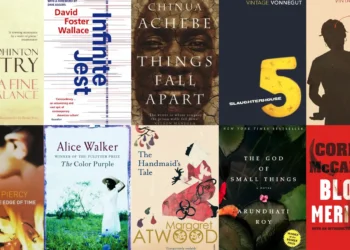How does inter-literariness affect out interpretation of texts
How does inter-literariness affect out interpretation of texts-Examining translation as storytelling reveals the complex and imaginative nature that is inherent in the process of translating stories between different languages and cultural contexts. Translation is revealed to be a dynamic process that entails reshaping, recreating, and reimagining the original narrative for a new audience, going beyond the technicalities of language conversion. Like a storyteller, the translator negotiates linguistic complexities, cultural quirks, and contextual differences to convey the deep meaning as well as the literal meaning of the original work.
The Influence of Inter-literariness on Textual Interpretation:
- Enhanced Contextual Understanding:Interliterariness provides readers with a more comprehensive contextual understanding by acting as a link between texts. Knowing the original text enhances our understanding of any references or allusions we come across in a text. Readers can understand the richness of meaning and cultural resonance ingrained in a work thanks to this interconnectedness.
Illustration: In Salman Rushdie’s “Midnight’s Children,” the inter-literariness with the Indian epic “Mahabharata” enhances our understanding of the novel’s themes, characters, and allegorical elements.
- Identification of Literary Patterns:Inter-literariness research identifies recurrent themes and patterns in a variety of literary traditions. By identifying these patterns, readers can interpret texts more nuancedly and identify themes and archetypal structures that cut across cultural and temporal boundaries.
Illustration: The archetype of the hero’s journey, found in ancient myths and modern literature alike, demonstrates how inter-literariness reveals a universal narrative pattern that shapes our understanding of heroic quests.
- Exploration of Intertextual Networks:Readers are encouraged to investigate complex intertextual networks by interliterariness. Finding hidden threads that connect seemingly unrelated works becomes easier as we follow references and connections between texts. This investigation broadens our understanding of the interdependence of literary production.
Illustration: Virginia Woolf’s “Mrs. Dalloway” and Michael Cunningham’s “The Hours” form an intertextual network, with Cunningham’s work reimagining and dialoguing with Woolf’s classic novel.
- Enriching Symbolic Interpretations:How does inter-literariness affect out interpretation of texts-Symbols and metaphors often gain additional layers of meaning through inter-literariness. A symbol in one text may carry echoes of significance from another, adding complexity and depth to its interpretation. Readers attuned to intertextual references can decipher these symbolic resonances.
Illustration: The use of the phoenix as a symbol in J.K. Rowling’s “Harry Potter” series gains added significance when considered in the context of its mythological and literary history, contributing to the broader theme of rebirth and transformation.
- Critical Engagement with Texts:Inter-literariness invites readers to critically engage with texts by prompting questions about authorial intent, genre conventions, and cultural influences. This critical engagement goes beyond the confines of individual works, encouraging a more holistic understanding of literature as a dynamic and evolving conversation.
Illustration: James Joyce’s “Ulysses” engages in inter-literariness by reimagining Homer’s “Odyssey,” inviting readers to question the role of the author in reshaping and reinterpreting classical texts.
Also Read-
- How is the area of cultural studies related to comparative literature
- The Role of Comparative Literature in Fostering World Harmony
- What do you understand by shifting perspectives and how does it influence our interpretation of a cultural work
Challenges and Critiques of Inter-literariness:
- Potential for Exclusivity:Readers unfamiliar with the texts cited may find it difficult to navigate the complex web of intertextual references. In these situations, interliterariness may unintentionally result in a feeling of exclusion and restrict access to some levels of meaning.
- Overemphasis on Canonical Texts:Some critiques argue that inter-literariness tends to prioritize canonical texts, perpetuating a literary hierarchy that marginalizes non-canonical or marginalized voices. This bias may impact interpretations by focusing disproportionately on certain literary traditions.
Conclusion
Our understanding of texts is greatly influenced by interliterariness because it links them to an extensive web of literary, cultural, and historical allusions. Our comprehension is enhanced by this lively intertextual discussion, which provides levels of meaning that go beyond the boundaries of individual works. Readers cross linguistic, cultural, and temporal boundaries in their ongoing exploration of literature as a community endeavor as they make their way through this complex web of connections.
How does inter-literariness affect out interpretation of texts-While challenges exist, such as the potential for exclusivity and the risk of canon bias, the benefits of inter-literariness in deepening our appreciation for the richness and complexity of literary works are undeniable. Embracing inter-literariness allows readers to embark on a journey that goes beyond the surface of a single text, unveiling the intricate tapestry of literary interconnectedness that shapes the ever-evolving landscape of literature.
FAQ:
1: How does inter-literariness contribute to a deeper understanding of texts?
A: Inter-literariness enriches our understanding by connecting texts to a vast network of literary, cultural, and historical references. This dynamic intertextual dialogue offers layers of meaning that extend beyond individual works, providing a more nuanced and contextual interpretation.
2: Can inter-literariness be exclusionary for readers unfamiliar with certain references?
A: Yes, there is a potential for exclusivity, as readers who are not familiar with referenced texts may feel excluded from certain layers of meaning. However, a balanced approach to inter-literariness can mitigate this challenge by fostering accessibility and inclusivity.
3: How does inter-literariness influence symbolic interpretations in literature?
A: Symbols and metaphors gain additional layers of meaning through inter-literariness. A symbol in one text may carry echoes of significance from another, contributing to a more complex and nuanced interpretation.
4: Does inter-literariness prioritize certain canonical texts over others?
A: Yes, there is a risk of overemphasizing canonical texts, which may marginalize non-canonical or marginalized voices. It is important to recognize and address this bias to ensure a more inclusive exploration of inter-literariness.
5: How can readers engage critically with inter-literariness?
A: Critical engagement with inter-literariness involves questioning authorial intent, exploring genre conventions, and considering cultural influences. It encourages readers to view literature as a dynamic and evolving conversation, transcending traditional boundaries.
6: Is inter-literariness limited to specific genres or time periods?
A: No, inter-literariness transcends genres and time periods. It is a universal aspect of literature, manifesting in various forms across diverse cultural and historical contexts. The intertextual nature of literature is a dynamic feature that continually shapes the literary landscape.
















